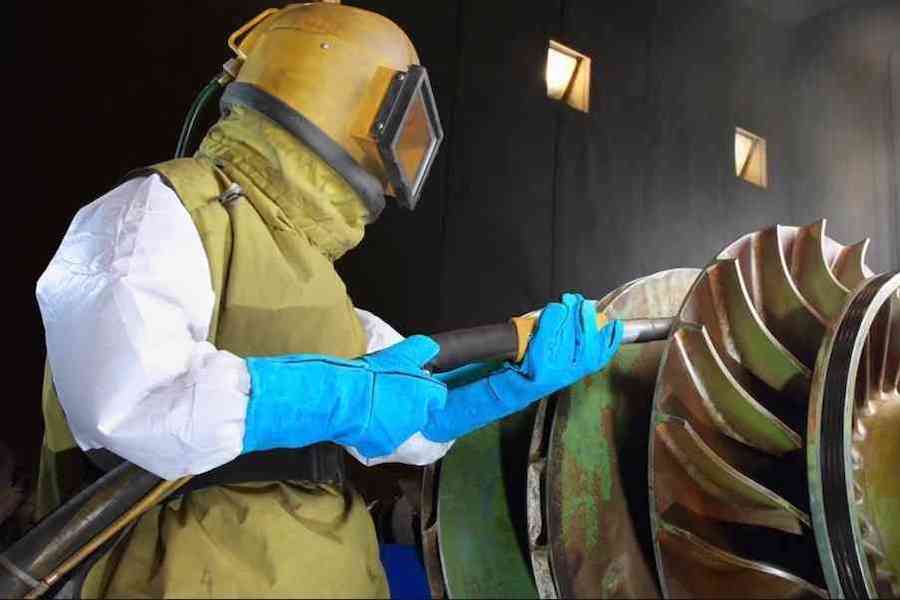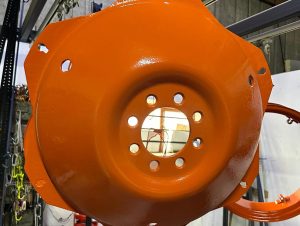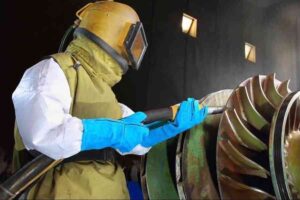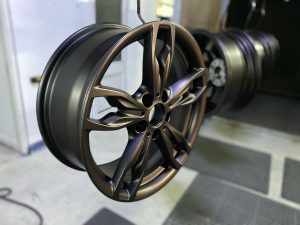Sandblasting is a powerful technique for achieving clean, texture, and properly prepared surfaces. Used in a wide variety of applications, it works by propelling abrasive particles at high velocity towards the surface of a workpiece. It effectively removes rust, scale, paint and other coatings, as well as contaminants from a range of surfaces. After sandblasting, they are then ready to be painted, coated, or given further treatment.
Many people encountering the technique for the first time presume that ordinary sand is used in the process. In fact, the process uses a range of abrasive media that are specifically designed for sandblasting applications. Therefore, it’s essential to select the right abrasive media for your workpiece material and desired surface finish. Choosing the right sand for a sandblaster is critical if you want to achieve the best results and avoid potential damage to your surface.
Can you use regular sand to sandblast?
Regular sand is cheap and readily available, either as a building material or for children’s sand pits. However, regular sand is not recommended as sand for a sandblaster. Regular sand contains moisture and impurities that can lead to clogging, abrasion, and potential equipment damage. Regular sand particles also vary widely in size, shape, and hardness. This means that when they are used as sand for a sandblaster, they will generate inconsistent blasting results and surface finishes.
Therefore, it’s crucial to used specialised abrasive media as sand for a sandblaster application, to ensure operative safety, as well as the equipment durability, and the best results.
What kind of sand can you use in a sandblaster?
A number of potential abrasive materials can be used as sand for a sandblaster.
- Silica Sand
Silica sand is one of the most commonly used materials for sandblasting due to its hardness and uniformity. Consisting of pure quartz crystals, it can be crushed and graded to specific particle sizes to meet the requirements of different sandblasting applications. Grit sizes, ranging from fine to coarse, allow for precise control over surface roughness and texture. It’s essential that proper ventilation and PPE are provided when using silica sand as prolonged exposure to silica dust can cause respiratory issues.
- Aluminium Oxide
Aluminium oxide is a synthetic abrasive material that is widely used in sandblasting applications due to its hardness and durability. A highly versatile material, it is manufactured by fusing alumina crystals at high temperatures. This results in sharp-edged particles that can effectively remove surface contaminants and coatings. Different grit sizes are available, ranging from fine to coarse, making it suitable for use with a range of surface materials and different applications. Aluminium oxide also produces minimal dust compared to silica sand, reducing the associated health risks.
- Garnet
Garnet is a natural mineral with abrasive properties. Its hardness, sharpness, and low dust generation when used as sand for a sandblaster makes it an excellent choice for sandblasting application. It is typically sourced from beach or river deposits and is available in various grades, making it versatile for highly precise surface preparation tasks.
- Glass Beads
Glass beads are spherical abrasive media made from recycled glass. They are smooth, uniform, and have a non-abrasive nature. Unlike traditional abrasive media, glass beads do not etch the surface, but instead clean and polish it. This makes them an ideal choice for sensitive surfaces, such as stainless steel or aluminium. Glass beads also produce only minimal dust and leave little in the way of residue.
- Crushed Walnut Shells
Crushed walnut shells are organic media with a gentle abrasive action. Biodegradable and with low-dust generation, crushed walnut shells are ideal for cleaning and stripping delicate surfaces, such as wood, plastic, or aluminium, without the risk of damage. Walnut shell blasting is non-toxic and environmentally friendly, making it a good choice where chemical or more abrasive alternatives are not suitable.
Shot blasting service from Pershore Dip Coating
At Pershore Dip Coating, we always choose the right abrasive material to achieve the desired outcome. With our extensive experience, we take the guesswork out of the sand blasting process.
Our shot blasting service in Worcester is a budget-friendly and highly effective means to achieve outstanding results.
Our family-run team provides a personal and professional approach to all our clients across all our services. We pride ourselves on the quality of our work and can offer expert advice about the shot blasting process.
Contact us to find out more and to request a comprehensive quote.




